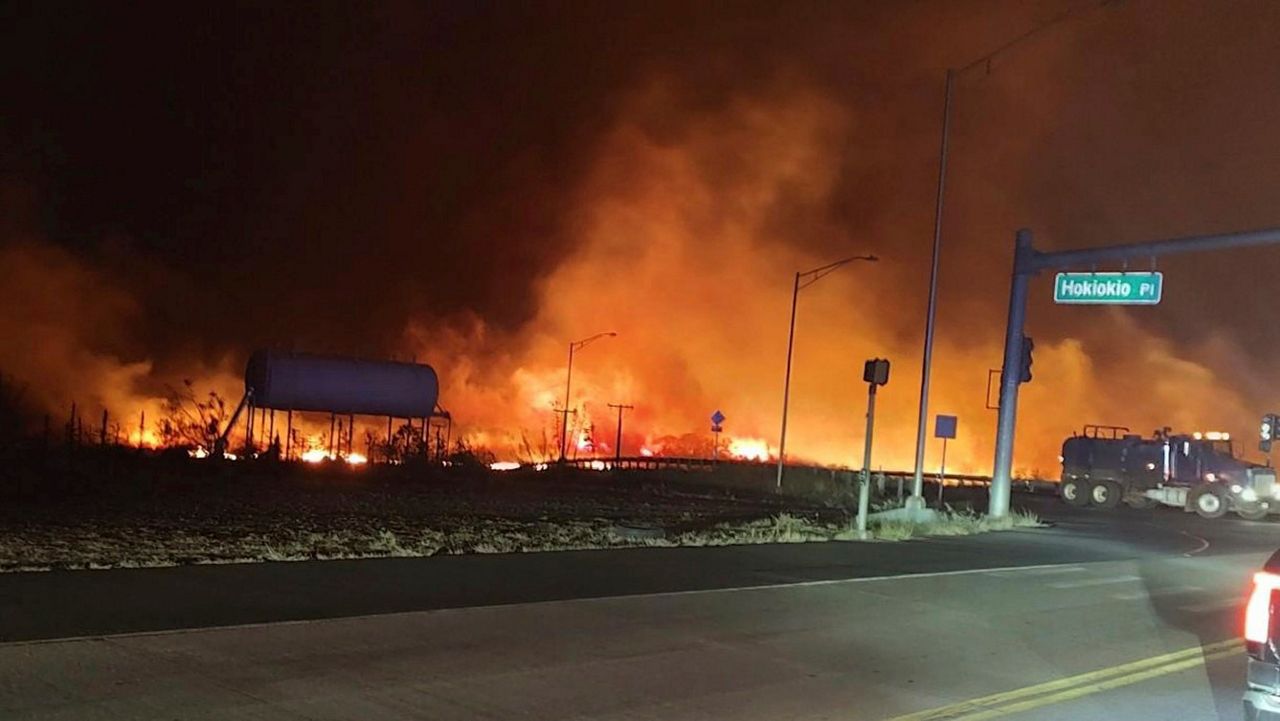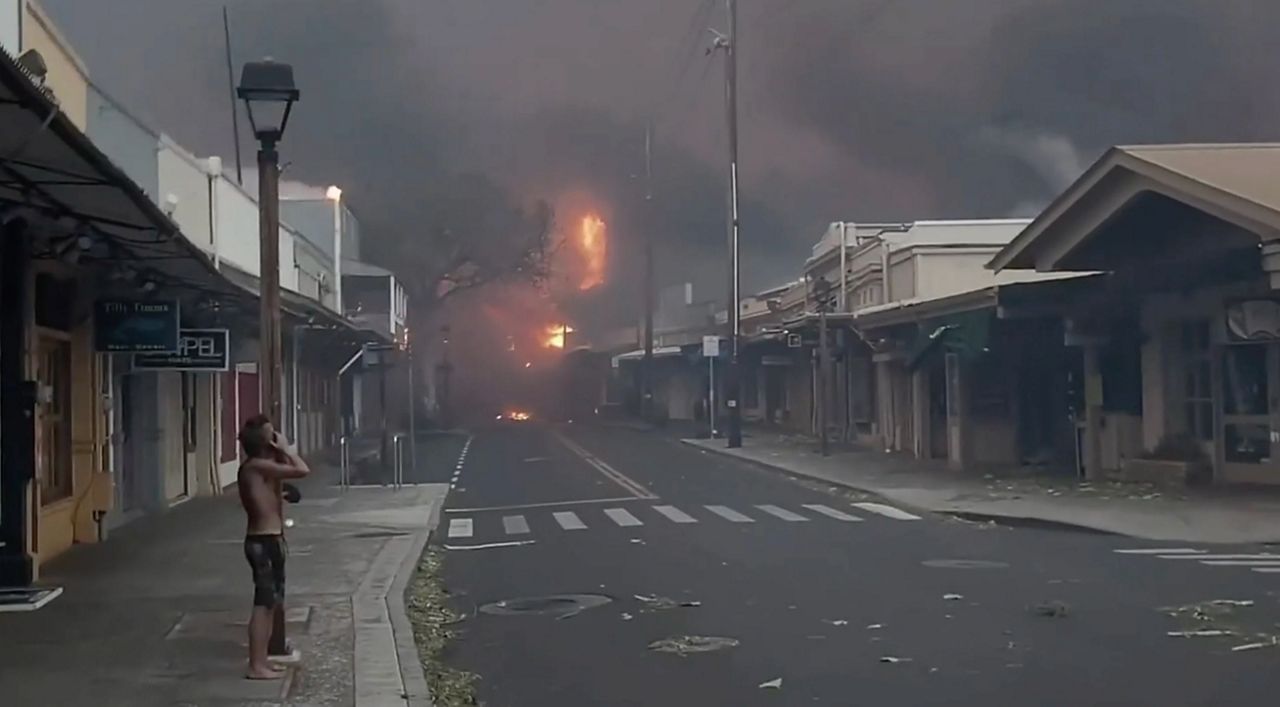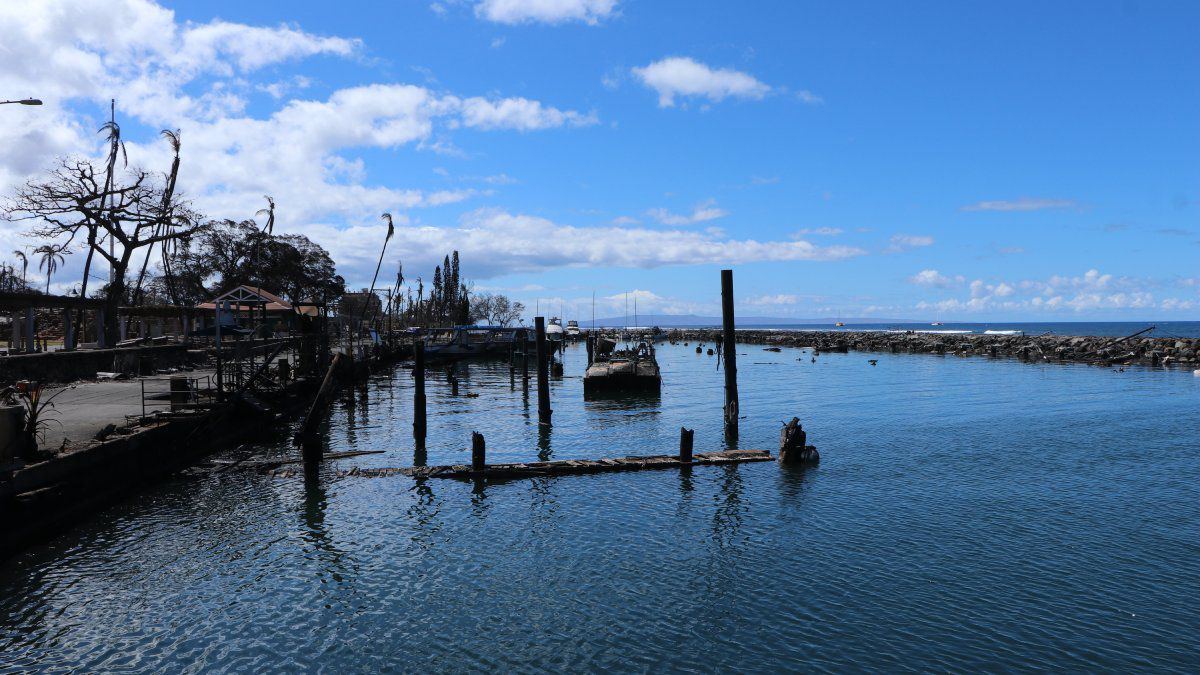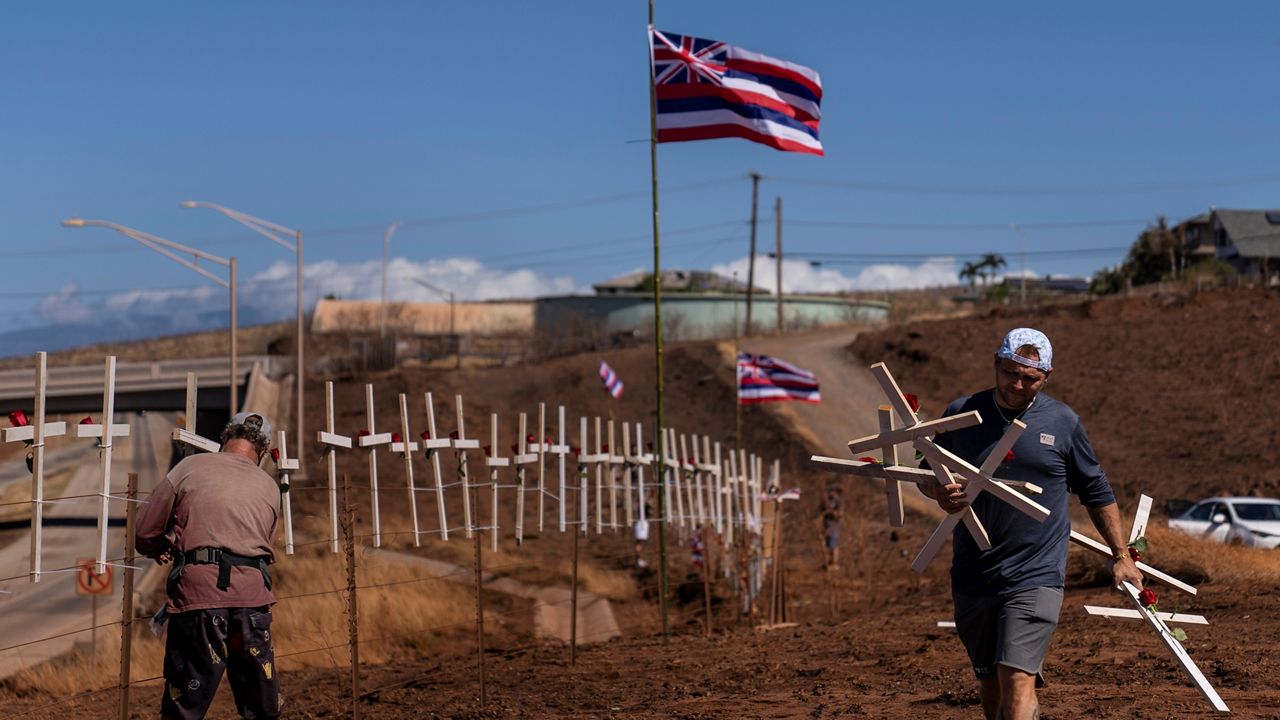HONOLULU (AP) — Fire departments across the state are reevaluating their emergency communication capabilities after the Maui wildfires, when the vulnerability of the island’s cellular network — and a lack of advanced communication tools in fire vehicles — complicated efforts by first responders as they confronted one of the worst disasters in Hawaii’s history.
On Oahu, a county-level “interagency communications group” now meets about once a week and often brings in private cell carriers, including AT&T, to discuss how the island’s coverage would be affected in various disaster scenarios, Fire Chief Sheldon Hao said Monday.
On Kauai, emergency responders aim to fill a puka, or hole, in their communications coverage on the island’s north shore by installing a new cell tower at Haena. They want to improve reception from Princeville to Ke’e Beach, where lifeguards sometimes have to roam the sand looking for a cell signal to call for help. The plan for that tower has been strongly opposed by nearby residents, and it has not been resolved.
On Hawaii Island, first responders have managed to get either most or all of the cell towers they’ve sought in the past decade for better network coverage, but the ability to track all of the fire department’s vehicles during an emergency remains limited, Todd said.
Maui fire officials, meanwhile, declined to be interviewed, but the recent after-action report prepared on its behalf by the Western Fire Chiefs Association recommended that the Maui Fire Department revisit whether it makes sense to join FirstNet, a cellular network for first responders that was rolled out in Hawaii in 2017 with assurances that it would improve response times and save lives.
“It’s becoming more and more important for first responders to have broadband coverage because of some of the software they have in their equipment that relies on that broadband backbone,” said Bob Roper, the association’s senior policy advisor and lead writer of that report.
A national cellular network reserved solely for first responders — basically a channel for them to use in an emergency that’s separated from standard commercial phone users — was proposed in the wake of the 9/11 attacks.
When Hawaii joined the FirstNet program in 2017, three of the state’s county fire departments initially decided that it didn’t make sense to switch carriers to participate. But by the time the fires swept through Lahaina and upcountry communities on Aug. 8., Maui was the only county fire department in the state not on FirstNet.
Even if MFD was on FirstNet, it likely would not have helped since the fire destroyed fiber optic lines and caused all 21 cell towers serving Lahaina to fail, raising questions about the reliability of FirstNet on other islands.
“What good is a first responder network that doesn’t work where the first responders are?” Hawaii County Fire Chief Kazuo Todd said this week, recalling his questions to FirstNet board members when they met with him and other local first responders on March 5 in Honolulu to discuss FirstNet’s capabilities after Lahaina.
“That was my stance,” Todd said. In West Maui, a “single line of failure was the problem.”
When FirstNet was being set up around the country, local first responders, including those in Hawaii, identified which areas would be critical to have that coverage available, according to Kenison Tejada, a senior public safety advisor for FirstNet’s authority who handles Hawaii.
Tejada made those comments during a recent briefing for Kauai County Council members on the proposed tower at Haena. It’s unclear how many of those areas flagged now have coverage. Tejada declined to discuss where those Hawaii areas are located and referred any follow-up questions to AT&T.
Jeffrey Kobs, an AT&T spokesman, said that the plans Tejada referenced have “detailed and proprietary network information” and that the telecommunications company does not share them publicly.
At the March meeting in Honolulu, emergency responders and FirstNet officials discussed potentially adding Starlink satellite connections to each tower to provide at least some coverage if the lines go down, as well as fire-proofing those fiber-optic lines or burying them underground, Todd said. It remains to be seen what might come of the meeting. Officials with AT&T, which provides FirstNet nationally via a public-private partnership, did not respond Tuesday.
On Oahu, fire chief Hao said he’s not aware of any vulnerable spots similar to Lahaina’s that could knock out coverage to large areas.
And Hao stressed that his department would still make effective use of radio even if it loses cell coverage because that’s the method the Honolulu department has historically used.
“I think wherever you go on any island, there’s always gaps … but for the most part, in my experience, I haven’t had much blackouts with FirstNet,” Hao said Monday. “It’s like anything else — it makes things more efficient. It helps, but if it’s not working, it’s not going to prevent us from communicating.”
When Lahaina lost cellular coverage Aug. 8, its fire crews were still able to talk to one another as wildfires raged across the island using their preferred traditional method of communication: radio.
The radio coverage for Maui first responders didn’t just remain intact that day, it was “exceptional” thanks to a repeater for the system located on Lanai, said Roper of the Western Fire Chiefs Association. Having FirstNet would still be a plus because it gives those crews another option to communicate in case one system fails, he added.
FirstNet can also provide special mobile devices to keep coverage afloat during and after an emergency. In the fire’s aftermath, FirstNet sent devices stored on Oahu and Kauai called “Cells on Wheels,” or COWS, to Maui to help restore the coverage there, according to Kauai Fire Capt. Micah Mokauahi.
FirstNet also sent 50 to 100 cell phones, protective gear and other equipment “pretty much unasked” to Maui to help with the immediate response, Big Island fire chief Todd said. He added that he appreciated the FirstNet board coming to Hawaii two months ago to discuss their service after Lahaina.
“They were attentive,” he said. “They were concerned."
“It’s hard to say what will come out of that,” he added.
A key reason why cellular and broadband access is important, experts and local responders say, is because of the advanced technology becoming available for emergency vehicles.
On Maui, most of MFD’s vehicles still lack that new software, including so-called “automatic vehicle locators,” or AVLs. During the wildfires, that made it challenging to keep track of MFD vehicles on the day, according to a separate after-action report prepared for the state Attorney General’s Office.
AVL software can be especially useful in the chaotic, early moments of an emergency before local police and fire have set up their incident command post, Roper said. MFD had already started to upgrade the software in its engines prior to the Aug. 8 fires, but that effort remains underway, he said.
Honolulu’s fire engines and vehicles are equipped with AVL, Hao said, while Kauai’s and Hawaii Island’s aren’t, according to those chiefs.
On the Big Island, fire engines are equipped with modems that use a cloud-based system called Cradlepoint to provide at least some location data. The fleet still needs more software technology upgrades, Todd said.
“It’s not exactly where I want it to be,” he said. As for how to make those upgrades, “It’s not a simple or cheap process to figure that out.”
The Kauai Fire Department recently upgraded to radios that have Global Positioning System locators, according to that island’s fire chief, Michael Gibson. Those radios can operate using the island’s cell towers if the signal is stronger, he said.
The Kauai department is also in the process of upgrading its software, according to Gibson, but it needs to boost coverage with the proposed tower at Haena to use that software more effectively.
“Communication is more than just radio,” he said. “I feel like we’re decades behind and if we don’t put in these features like this tower we’re going to always be behind.”
___
This story was originally published by Honolulu Civil Beat and distributed through a partnership with The Associated Press.








